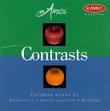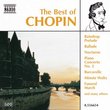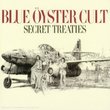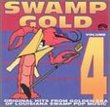| All Artists: Franz Joseph Haydn, Helmut Müller-Brühl, Cologne Chamber Orchestra Title: Haydn: Symphonies Nos. 80, 81 & 99 Members Wishing: 0 Total Copies: 0 Label: Naxos Release Date: 10/28/1997 Genre: Classical Styles: Historical Periods, Classical (c.1770-1830), Symphonies Number of Discs: 1 SwapaCD Credits: 1 UPC: 636943411025 |
Search - Franz Joseph Haydn, Helmut Müller-Brühl, Cologne Chamber Orchestra :: Haydn: Symphonies Nos. 80, 81 & 99
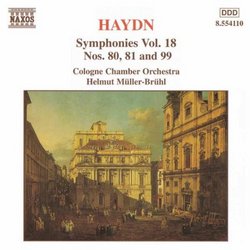 | Franz Joseph Haydn, Helmut Müller-Brühl, Cologne Chamber Orchestra Haydn: Symphonies Nos. 80, 81 & 99 Genre: Classical
|
Larger Image |
CD DetailsSimilar CDs
|
CD ReviewsPolished performances of less familiar late symphonies Richard Watts (rswatts@worldnet.att | Mentone, California | 10/03/1998 (4 out of 5 stars) "All three works are fine examples of Haydn's mature symphonic style, though none are frequently performed. Nos. 80 & 81 were written near the end of his employment at Esterhazy. Lacking trumpets, clarinets and timpani, they do not have quite the sonic brilliance of the 12 final Salomon symphonies commissioned for performance in London. The trio of No. 81 is especially felicitous. Symphony No. 99 was in the second six-symphony sets of Salomon symphonies, and is a somewhat neglected masterpiece (perhaps because it lacks a nickname such as "Miracle" or "Oxford.") The Cologne Chamber Orchestra presents agile, flexible, idiomatic performances with well-recorded sound. Typical of the Naxos tradition, this bargain-priced, fully-packed disc provides a recording opportunity for lesser-known but highly competent musicians." Exploring the Haydn Symphonies -- Nos. 80,81, 99 Robin Friedman | Washington, D.C. United States | 07/13/2006 (4 out of 5 stars) "Although this CD includes a performance of one of Haydn's "London" symphonies, no. 99, it also includes performances of two lesser-known Haydn symphonies, nos. 80 and 81. Symphony no. 81, in particular, is difficult to find on a single CD, separate from a complete set or other lengthy compilation. Helmut Muller-Bruhl conducts the Cologne Chamber Orchestra in volume 18 of Naxos's admirable project of recording the complete Haydn symphonies performed by a variety of conductors and orchestras. The performances here, especially of the 99th symphony, do not reach the level of some other recordings. But they are nicely and more that adequately done and will introduce the listener to some neglected Haydn. Symphonies 80 and 81 are important because they are the last symphonies Haydn composed before the set of "Paris" symphonies, nos. 82 -- 87, in which he took the form to a new level. These two works date from 1784 and were part of a set of three which also included symphony no 79. Symphony no. 80 in D minor is a neglected masterpiece that, in the words of the Oxford Companion to Haydn (edited by David Wyn Jones) "skillfully mixes Sturm und Drang and galant idioms... The overall result is an extraordinary symphony that finds coherence in its diversity." (p. 397) The first movement of the 80th is based upon a lengthy, stormy theme contrasted with a galant theme of only seven measures. Both themes are explored in detail in the development while the stark character of the movement dominates the recapitulation. The adagio contrasts a lyrical, serene theme presented at its beginning and end with a stormy middle section. The third movement is an angular minuet, in which both the main theme and the trio exhibit substantial tautness and tension. But the symphony concludes with a rhythmic, galant finale, delightul both in its ease and in its learning. The rarely-performed symphony no. 81 is G major is a much more cheerful, accessible work, opening with a skipping theme in the violins over a held note in the cello, followed by a related, complementary second theme. The development gradually works up to a large crescendo on the initial theme, which appears again, with marked changes, in the recapitulation. The following movement, an andante, consists of a tranquil theme followed by four easy to follow variations. The minuet theme opens with light repeated notes in the strings followed by a rustic trio which gives a prominent voice to the bassoon. The bassoon also plays a large role in the finale, a lively galant style movement with substantial counterpoint at the conclusion. The symphony no. 99 in E-flat major is one of Haydn's final group of "London" symphonies, composed for his second visit to London in 1794 and, together with its companions, exhibits his consummate final mastery of symphonic writing. The 99th uses clarinets, for the first time in a Haydn symphony, and is notable throughout for the great freedom it allows to the winds. Following a slow, harmonically complex introduction, the first movement develops with an energetic, propulsive character featuring two contrasting themes using winds increasingly as it progresses. The lovely second movement, adagio, begins with a flowing passage in the strings that gradually expands and dips briefly into a minor key. The climactic moment occurs at the end of the movement where the entire wind choir of the symphony sings out the theme freely and with great breadth. The minuet is glittering with a large, pregnant cadential pause in the statement of the theme followed by a trio for the winds. After a quiet opening, the finale develops with a second theme given to the winds, counterpoint in the development, and a false ending followed by an expansive, exultant close. The 99th is a great symphony, to be sure, frequently recorded. But the lesser known symphonies, nos 80 and 81 composed by Haydn just before a major turn in his career are the primary attractions of this fine CD. Robin Friedman" Good No. 80, the rest mediocre HB | Fort Mill, SC | 03/01/2006 (2 out of 5 stars) "I was mildly shocked to see the previous reviewers higher ratings. This CD, in my humble opinion, only has one good performance, No. 80. No. 81, one of Haydn's most underrated symphonies, has only about half the energy it really needs to be effective. Back in the LP days, Antal Dorati recorded this symphony with a London pickup orchestra for Mercury. It is one of the greatest Haydn recordings ever made. The energy of that performance had NASCAR written all over it and he takes all of the repeats. For some reason, it has never been reissued on CD. A real trajedy. As for 99, it is very dull, the weakest performance of the three."
|

 Track Listings (12) - Disc #1
Track Listings (12) - Disc #1